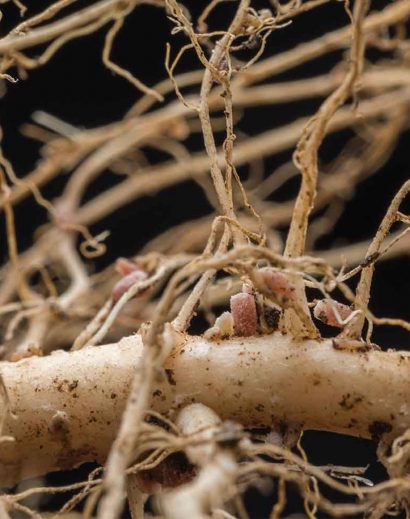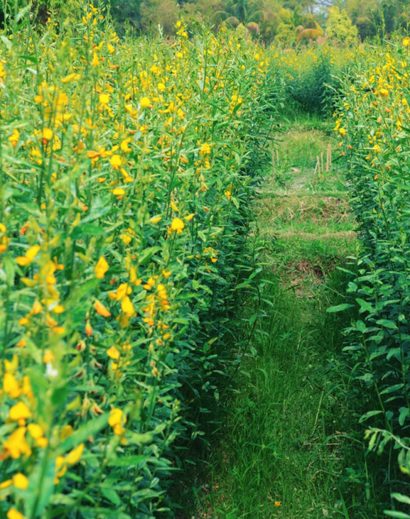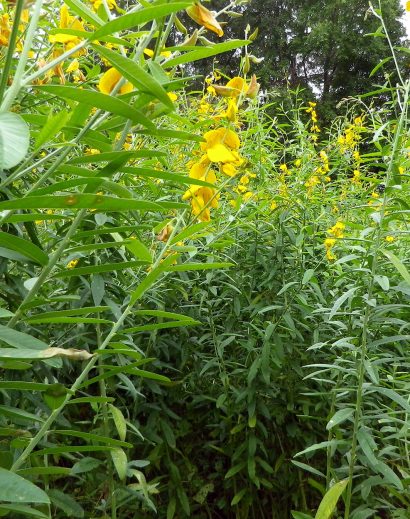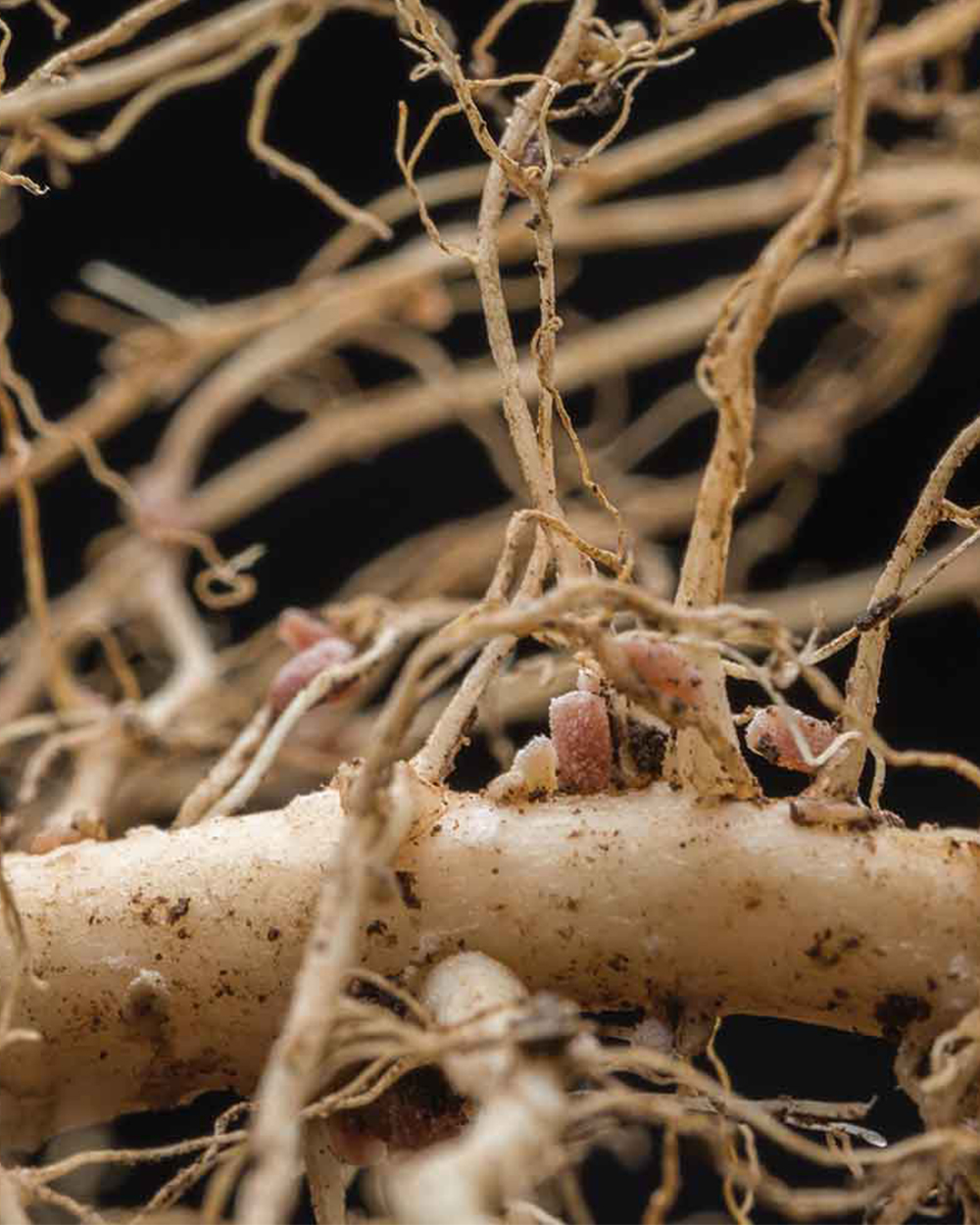Sunhemp (Crotalaria juncea), also known as Indian hemp, is a tropical legume plant that is primarily grown for its valuable fibers and as a green manure crop. It is native to the Indian subcontinent and is cultivated in many parts of the world, particularly in regions with warm climates. Here are some key features and uses of sunhemp:
Sunhemp (Crotalaria juncea), also known as Indian hemp, is a tropical legume plant that is primarily grown for its valuable fibers and as a green manure crop. It is native to the Indian subcontinent and is cultivated in many parts of the world, particularly in regions with warm climates. Here are some key features and uses of sunhemp:
- Fiber Crop: Sunhemp is primarily grown for its fibers, which are used in the textile industry to make ropes, twine, and various other products. The fibers are durable and strong, making them suitable for various applications.
- Green Manure: Sunhemp is also widely used as a green manure or cover crop. When grown and then incorporated into the soil, it enriches the soil with nitrogen and organic matter. This improves soil fertility and structure, making it beneficial for subsequent crops.
- Nitrogen Fixation: Sunhemp is a leguminous plant, which means it has the ability to fix atmospheric nitrogen with the help of nitrogen-fixing bacteria in its root nodules. This nitrogen fixation process enhances soil fertility by adding nitrogen to the soil.
- Livestock Feed: While sunhemp is not typically grown as a forage crop, its leaves and young shoots can be used as livestock feed, especially for ruminants like cattle and goats.
- Pest Control: Sunhemp has been used in some regions as a natural pest control measure. It can act as a trap crop, attracting certain insect pests away from other crops. However, it’s essential to manage sunhemp carefully to prevent it from becoming a pest itself.
- Soil Erosion Control: The deep root system of sunhemp helps prevent soil erosion, making it useful for soil conservation in areas prone to erosion.
- Fast Growth: Sunhemp is known for its rapid growth, which allows for multiple plantings in a single growing season. It can reach heights of up to 10 feet (3 meters) within a few months.
- Environmental Benefits: The cultivation of sunhemp can have environmental benefits, such as reducing the need for synthetic nitrogen fertilizers, which can contribute to pollution and greenhouse gas emissions.
It’s important to note that while sunhemp has various advantages, it can also have drawbacks, such as potential toxicity to livestock if not managed properly and its potential invasiveness in some regions. Therefore, it should be grown and managed carefully, taking local conditions and regulations into account.






Reviews
There are no reviews yet.